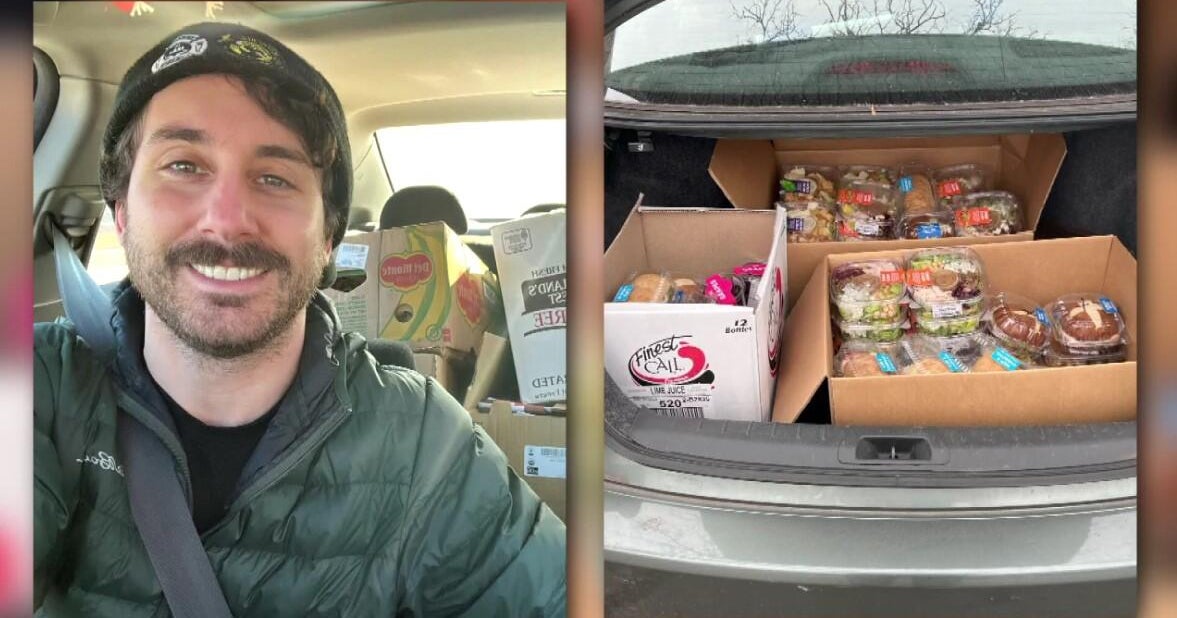A Chicago man is taking a high-tech approach to his fight against food insecurity, with some great results. Jake Tepperman said he’s living his dream of being part of something that is benevolent and tangible.
“Everyone needs to do what they can,” he said. “If everyone is literally just looking after their own neighbor, it would go a long way.”
Tepperman doesn’t just look after his neighbors. His mission is to get surplus food to people he’ll never even meet.
He’s the executive director and founder of Chicago Food Rescue, a non-profit that connects people and companies who have extra food with people and organizations who need it the most.
Tepperman offered a simple explanation of how it works:
“I get in touch with food donors. They get in touch with me about when there is excess surplus food,” he said. “We send a volunteer to pick up that food in their own vehicle and take it directly to one of our non-profit or community partners.”
There’s a lot more to it. This operation is tech-driven.
It starts with the Chicago Food Rescue app, which Tepperman said volunteers can download to see where food is available to be picked up from donors and delivered to non-profits at any time.
Tepperman walked CBS News Chicago through a food rescue beginning with a donation from the Pilsen Food Pantry to the non-profit Healthy Hood.
“When it’s time for you to start the rescue, you just click the start button,” he said. “You use mapping software to give you directions of where you are needing to go to pick up the food.”
The app gives step-by-step instructions on where to go, who volunteers can call when they arrive, and where to park. Volunteers can input the amount of food being donated, an then it’s onto delivery.
“More special instructions just making sure our volunteers know exactly what to do,” Tepperman said. “Closing out rescue, making it really easy for anybody to get involved by picking up food and delivering it to exactly where it needs to go.”
The food includes a lot of produce and prepared food, like grab-and-go sandwiches, and grocery stores often have meat or dairy to donate.
“We can find a place that can use whatever food it is that the donor has to donate. Oh, you’ve got a box of 40 sandwiches? Great, we can find a place for that. You’ve got 20 trays of prepared food? Okay, that’s great. Ten boxes of produce,” Tepperman said. “Anything that is viable and edible food that would be thrown away, we’ll rescue and find a place for it.
“Viable and edible” brings us to food safety.
“Our volunteers are generally taking food and transporting it to a non-profit partner that is in the same neighborhood,” Tepperman said. “So it’s not out of refrigeration nearly long enough to become a safety concern.”
Tepperman said fighting food insecurity runs in his family.
“When I was a kid, my family before a holiday was handing out boxes of food before Passover,” he said. “As more of a young adult, seeing people on the street who were either homeless or dealing with food insecurity bothered me. … In a city, a country with of much excess, I thought, ‘That doesn’t make sense.'”
Not one to let things go, Tepperman got to work understanding the problem.
“To me, it’s not a supply and demand issue, it’s a supply chain issue, it’s a logistics problem,” he said. “So I took my background, which is supply chain logistics, and kind of figuring out how things work, and I just wanted to start connecting the dots.”
Those dots have led him to great success with Chicago Food Rescue.
“Things are growing pretty rapidly and are continuing to pick up,” he said. “We just hit 100,000 pounds of food rescued last week, which is a significant milestone, but I think we’re just scratching the surface of what the need is.”
Chicago Food Rescue is totally free to donors and recipients. It runs on grant money and donations.
Rescues can be recurring or on a one-time basis. So can volunteering.
Do you know someone a person or place that brings you joy? We want to share your story.
Send us your “Eye on Chicago” ideas using the form below (or clicking here):
More from CBS News
